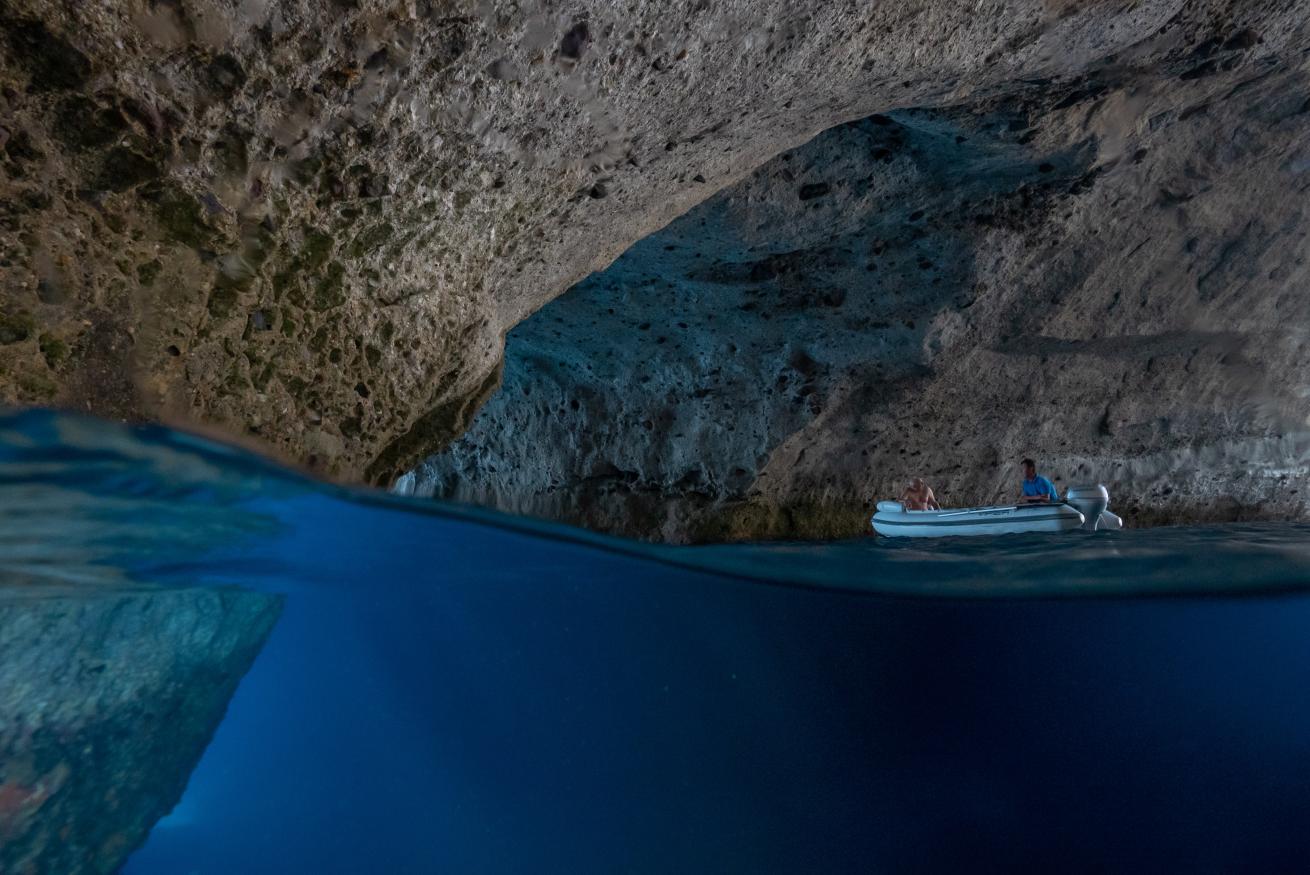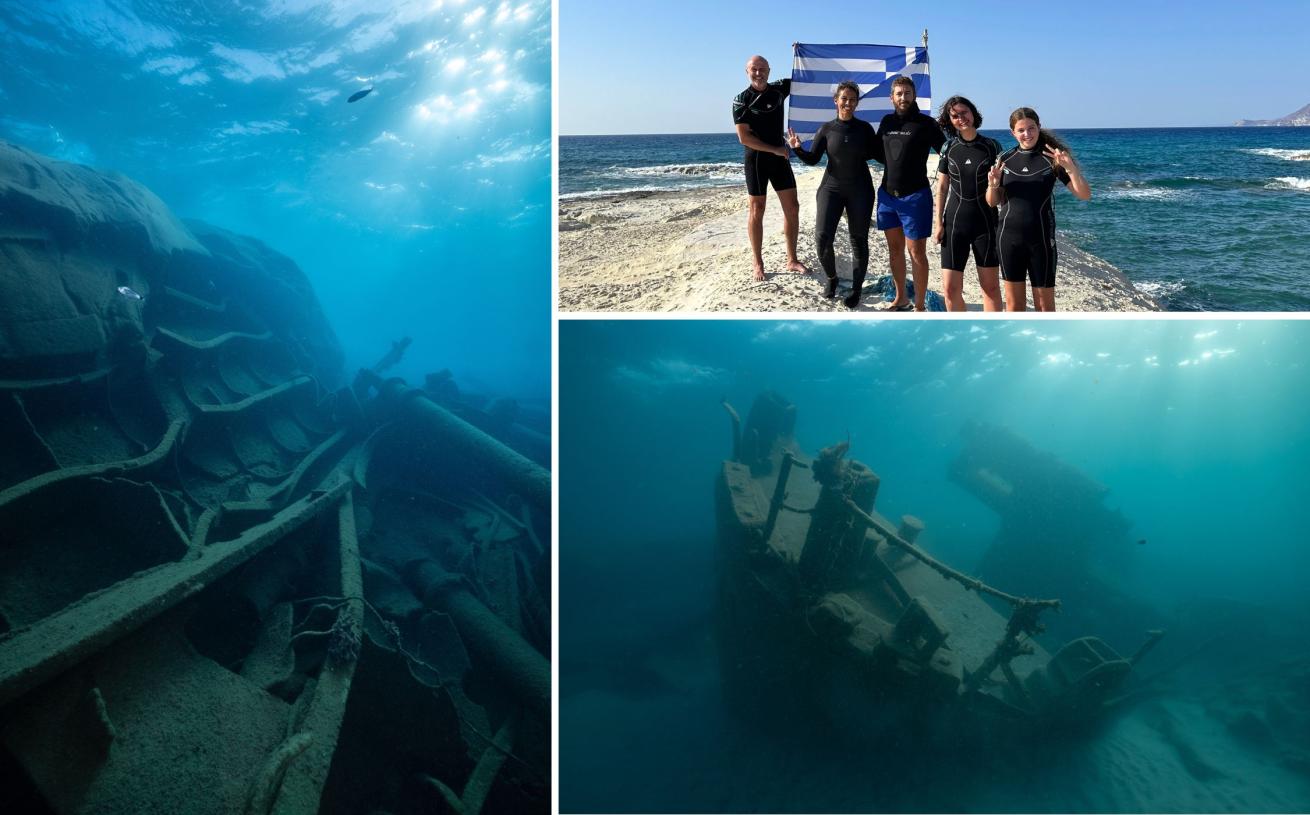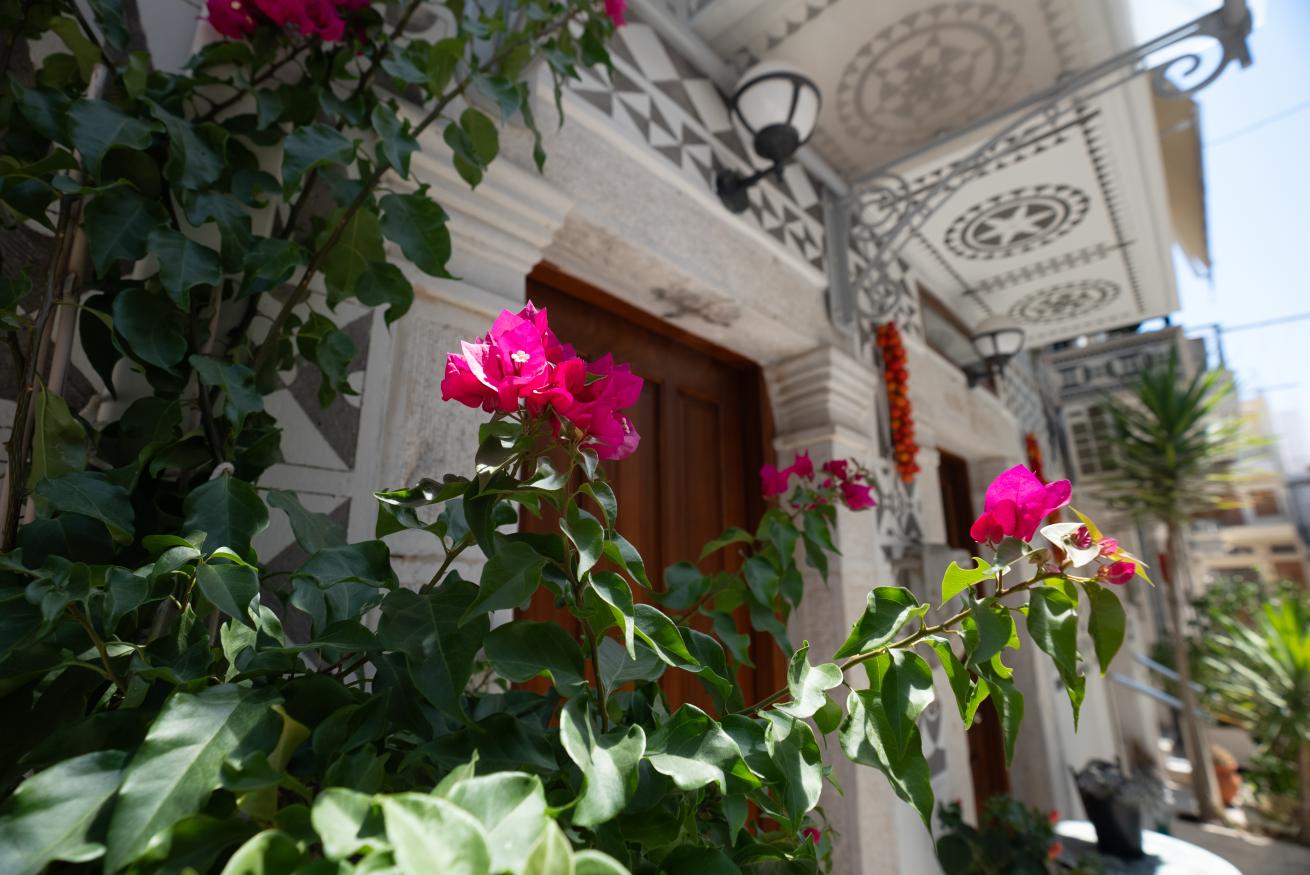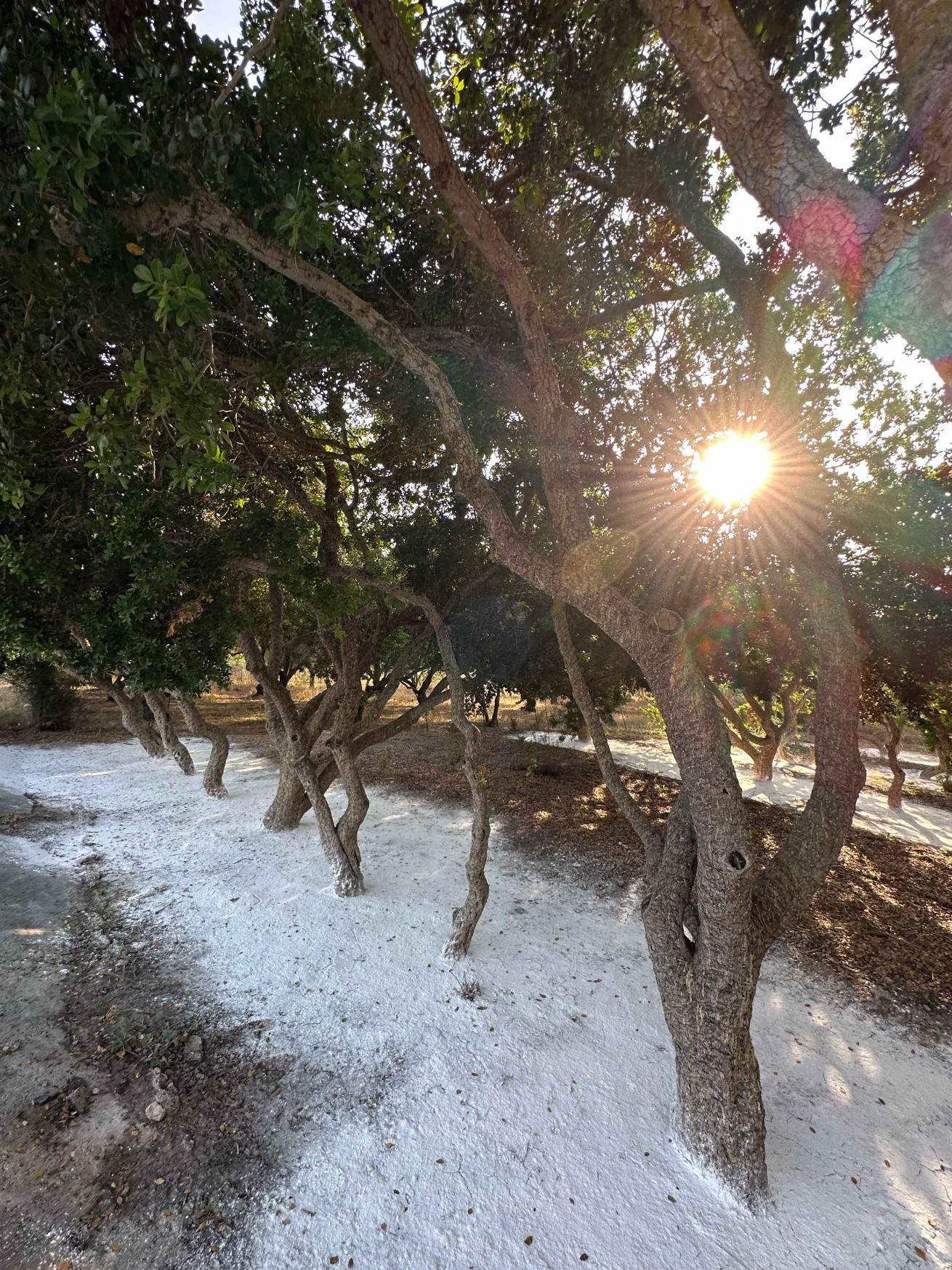Diving in Greece: Three Unexpected Islands to Visit

Kristin PaterakisMilos stuns all visitors with it's crystal blue waters and unworldly rock formations.
Growing up, my summer vacations looked drastically different than my friends'. While they spent their summers at sleepaway camp or heading “down the ocean” (said with a Baltimore accent), I had the fortune of visiting family in beautiful Greece. Our days were spent sweating around ancient ruins, eating traditional gyros and tiropita (cheese pies) and sunbathing on the warm pebble beaches. Admittedly, having the ability to travel to Greece was something I took for granted. Back then, I only saw the Aegean Sea as two things: a cold break from the heat or a resource for food as I watched my papou (grandfather) fish for dinner.

Kristin PaterakisDiving in Greece is just like visiting a museum, with ancient wonders to see up close.
In 2010, now an adult, I joined my sister and her friends on a tour of Athens and a handful of smaller Greek Isles. Our itinerary was similar to my childhood experience… with the addition of a little late-night dancing and, to my surprise, diving. After my first dive on the island of Paros, I felt immense joy, then anger—it was as if someone purposefully hid this underwater world from me for so many years.
This was also my first “cold water” diving experience—having only dove in Florida and the Caribbean previously. I was amazed by the vibrant colors and underwater topography that were strikingly different from the tropics. Additionally, I had never witnessed what happens when history is submerged quite like this. Sponges growing on ancient pottery in the cool comforts of the sea, not boiling at the acropolis, sparked a new interest diving into history.
In an attempt to spread awareness of the beauty and underwater cultural heritage Greece has to offer, here are my favorite islands to dive (so far) and why they are a must-visit.
Related Reading: Scuba Diving and Wine: An Unexpected Pairing in Mallorca
Paros
Paros is a picturesque island in the heart of the Aegean Sea with whitewashed villages draped in colorful bougainvillea flowers. Though we only did one dive, the experience left a lasting impression—as did the images from an impromptu underwater photoshoot. My sister and our friends visited a dive center and underwater archaeology school, the now-closed Aegean Diving College which was operated by acclaimed diver Peter Nicolaides.

The author's first dive in Greece in 2010, exploring Paros's underwater archaeology.
While the others donned snorkeling gear and awkwardly waved from the surface, I suited up and explored below. Today, there are five PADI centers operating in Paros and neighboring Antiparos for divers to choose from. With a variety of sites to choose from including reefs, wrecks and seabeds filled with amphora (ancient Greek jars), there’s something for all water lovers.
Topside, consider a day trip to Antiparos to dive the Cave of Antiparos for a unique look into Greece’s geologic history. Then, grab a bite and shop in Chora or take in the views of Agios Georgios (Saint George) Beach.
Milos
Magical Milos! It’s an adventurer’s, sailor’s and foodie’s dream; there are not enough great things to say about this small island neighboring Paros.
Milos is a wonderful destination whether you’re learning to dive or want to continue your training. Of the many shore dives in Milos, I experienced my first ocean cave dive from Mytakas Beach. While the caves in Florida and the Bahamas boast fascinating rock formations, this sea cave was full of marine life, including sponges, crabs and vibrant fishes.
Dive in Milos, centrally located in the port town of Adamantas, specializes in shore dives throughout the island. The friendly staff even provided coffee during our dive briefing and orientation.

Love to dive wrecks? Check out the submerged cargo vessel Africa at Sarakiniko.
The new rental gear, easy logistics and professional crew was reason enough for me to return the next day for another shore dive, this time at Sarakiniko, a dive site where I had just days earlier tested my fear of heights by jumping off a steep cliff, surrounded by moon-like terrain into the ocean roughly 20 feet below. Here, divers swim from shore to Africa, a tank that sunk in 2014. Boat dives are also available with Dive in Milos or Milos Scubaholics, though be prepared that the Meltemi wind (strong northerly winds across the Aegean) may cancel your trip—as it did mine.
Topside, the island is small enough to be explored by an ATV. (Book in advance of your trip, especially if you are going at peak season from June to September.) Take a catamaran tour of the island by sea; you’ll enjoy the camaraderie of friendly Greek sailors and traditional cuisine while getting a new perspective of the island only accessible by boat. (Think: picturesque fishing villages, pirate coves and absolutely stunning geological cliffs.) Stay in a villa near the quaint beach of Pollonia or a traditional syrma fishing home if you want to wake up to the sea at your doorstep.

Kristin PaterakisChios is renowned for it's medieval villages, each unique with their own style.
Chios
Situated in the northern Mediterranean just 5 miles from Turkey, Chios is renowned for its unique architecture, medieval castles and the masticha tree that mysteriously only produces resin on the island.
If you have a sense of adventure and are interested in exploring new sites, this is the island for you. For the newly certified, shore diving provides you with easier diving options while still letting you witness beautiful sites and marine life like octopus, grouper and sea turtles. Advanced divers should book a boat ride out to explore sea caves, amphora, natural wrecks and wall dives.
Unlike many of the dive operators and destinations throughout the U.S. and Caribbean that are used to (and equipped to handle) loads of travelers, expect small vessels with equally small dive groups accompanied by just one or two staff. Shore and boat trips are available with Chios Scuba Diving Adventure Center and Kamari Blue Ride.

Kristin PaterakisNature envelopes history as vibrant organisms take over ancient rocks and pottery.
When topside, visit the impressive Olympi Cave and the Chios Mastic Museum. The museum guides you through the history and significance of the aforementioned masticha tree. Learn the history and process of how locals collect its resin, a prized ingredient found in gum, drinks and food. Don’t miss a chance to see the various villages throughout Chios, all with their own unique architecture and history. This can be seen in the bold, geometric “painted village” of Pyrgi that contrasts with Anavatos, a village carved into the mountainside.
Related Reading: Five Great Greek Islands for Scuba Diving

Kristin PaterakisThe masticha (mastic) tree, despite efforts, only produces resin on the island of Chios. The area around the tree is calcium carbonate as part of the collection of the resin from the tree.
Need to Know
When to Visit: The best time of year for diving is June through September.
The temperatures vary quite a bit between the islands. While a 3 mm or shorter was sufficient in Milos and Paros, Chios is a bit colder, and I layered my 3 mm with a shorty and hood.
How to Travel: While there are many flights between islands or connecting through Athens, consider taking the ferry to save money.
What to Eat: Don’t leave Greece without indulging in fresh-baked spinach or cheese pies, baklava and souvlaki.
What to Say: Greeks, in general, are friendly and hospitable. A simple yassou (hello), kalimera (good morning), kalispera (good afternoon), kalinichta (goodnight), ti kanis (how are you) can go a long way.











